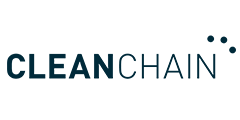Key Qualities of a Transparent Supply Chain
Article
Until recently, the concept of supply chain transparency was virtually unknown.
Today, it commands the attention of decision-makers across a broad spectrum of companies and industries as well as investors, customers and other stakeholders. There is growing demand for better sustainability in businesses, from the top to the bottom of the supply chain.
While the reasons are clear for this increased interest, it is often less clear how to define transparency in a supply chain context, as sustainable practices can differ vastly across organizations whether you are a brand or a supplier. Nonetheless, there are key qualities and practices that a supply chain can invest in and implement to demonstrate their transparency.
Innovative: A number of recent technological innovations have exciting potential applications in supply chain transparency. Some brands are investigating blockchain technology, used in cryptocurrencies, as a secure and reliable digital solution for tracking product origins. Other tracking technologies, such as QR codes and smartphone technology, are already widely used in supply chains.
Responsible: With transparency comes responsibility and accountability. A company with an opaque supply chain might look to evade responsibility when things go wrong in their suppliers’ facilities in an attempt to avoid scandal. In fact, this is usually bad for that company’s reputation. With a fully transparent supply chain, your brand assumes accountability within your supply chain – and consumers and investors will also know that you’re doing everything you can to prevent them.
Accurate: Stakeholders also want to be confident that the information that is available about your sourcing and supply is as accurate as possible. Transparency with regards to your sourcing as well as your methods of information gathering can provide them with this confidence.
Necessary: Brands that do not make transparency a priority fail to acknowledge that potential supply chain problems, such as facility accidents or unethical sourcing, are important. In a world where consumers are increasingly interested in where their products come from, what they’re made of and who made them, that lack of acknowledgement can negatively affect a brand’s reputation.
Safe: A supply chain that is more transparent to the public is also more transparent to the brand itself, making it easier to identify and address possible health and safety concerns.
Practical: In the past, it would have been a much more resource-intensive task to provide consumers with clear and accurate information about the operations of a highly complex international supply chain. However, thanks to the technologies mentioned above as well as wider access to internet communications among consumers, making your supply chain transparent is now more practically achievable than ever.
Responsive: “Transparency” is a widely used buzzword in the discourse around supply chains and consumer products in general. Those brands that can build a reputation for being transparent will become more discoverable to consumers who are concerned about transparency. Consumers have made clear their desire for manufacturers to disclose information about supply chain conditions. Responding to those desires is crucial for brands to compete in the modern market, demonstrating an awareness of trends, changes and consumer values.
Ethical: Becoming more transparent will be an important part of achieving your brand’s other ethical objectives, such as meeting environmental standards and safeguarding workers’ rights. “Talking the talk” on ethical issues is no longer sufficient – it’s the brands that can prove that they’re taking real action that see improvements in reputation and build bridges with ethical consumer groups and organizations.
Noticeable: Brands that are able to successfully improve transparency in their supply chains become leaders and pioneers within their industries. If your brand has a transparent supply chain, you will not only be improving the ethical conditions of your manufacturing, you will also be leading your industry into greater transparency and accountability as competitors act in an attempt to keep up.
Resilient: Transparent supply chains are also more resilient to many types of risks that concern customers, investors and internal stakeholders. These may include physical risks, such as weather-related losses, and transitional risks, such as consumer preferences shifting toward more sustainable, greener practices. An organization with an effectively managed and transparent supply chain is both more aware of potential risks and vulnerabilities and better equipped to mitigate and bounce back from them.
Companies that aim to become more sustainable start with their own operations, where they find that many of their environmental and climate impacts lie within their supply chains. Building a transparent supply chain can bring its own sets of challenges but is ultimately a long-term investment. While there is no quick and easy path to sustainability and transparency, the right supply chain solutions can help businesses progress toward their goals in demonstrating these qualities.
CleanChain, an ADEC Innovation, helps you gain visibility and insights into the chemical use in your supply chain. Want to find out more? Book a free demo with us today to find out how CleanChain can help you engage your supply chain and improve your chemical management initiatives.



